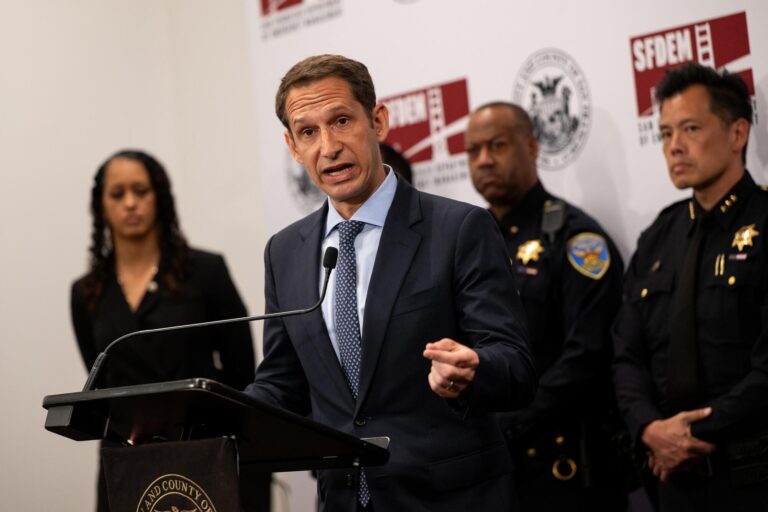In a bold move signaling increased federal involvement in urban law enforcement, President Donald Trump has set his sights on San Francisco for a targeted anti-crime intervention. The announcement comes amid rising concerns over public safety in the city, which has experienced notable spikes in certain crime rates. This initiative marks the latest chapter in the administration’s efforts to address crime through federal resources and coordination with local authorities. Critics and supporters alike are closely watching how this intervention will unfold in a city known for its progressive policies and complex social challenges.
President Trump Proposes Federal Crackdown to Address Rising Crime in San Francisco
In response to escalating crime rates, the federal government is contemplating a robust intervention in San Francisco aimed at restoring public safety and community confidence. The proposal centers on deploying additional federal law enforcement resources, including increased FBI and DEA presence, to collaborate closely with local agencies. Officials emphasize targeted actions against organized crime, drug trafficking, and violent offenses as part of a comprehensive plan to curb the city’s growing challenges.
Key components of the proposed federal crackdown include:
- Enhanced funding for local police departments earmarked for specialized anti-crime units
- Federal task forces dedicated to digital surveillance and intelligence sharing
- Expanded legal provisions to expedite prosecution of repeat offenders
- Community outreach programs funded to improve trust and cooperation
| Crime Category | Recent Trend | Targeted Federal Action |
|---|---|---|
| Violent Crimes | Up 15% YoY | Increased patrols and intelligence operations |
| Drug Trafficking | Rising by 20% | Expanded DEA involvement and undercover initiatives |
| Property Crimes | Marginal increase | Community surveillance grants |
Analysis of Crime Trends Driving the Call for Federal Intervention in the Bay Area
Recent crime statistics from the Bay Area reveal a stark increase in violent incidents and property crimes, fueling demands for stronger federal law enforcement support. The city’s homicide rate has climbed by 15% in the past year, while reports of armed robberies and assaults remain persistently high, overwhelming local police resources. Community leaders and law enforcement officials alike cite the proliferation of gang-related activities and drug trafficking as key catalysts worsening public safety.
The urgency for federal intervention is further underscored by the following critical trends:
- Spike in auto thefts: Bay Area jurisdictions experienced a 20% surge in vehicle thefts, complicating recovery efforts.
- Organized crime networks: Increased FBI operations uncovered new crime syndicates exploiting regional transit and ports.
- Resource strain: Police departments report significant manpower shortages, leading to slower response times.
| Crime Type | Increase (%) | Year-over-Year |
|---|---|---|
| Homicides | 15% | 2023 vs 2022 |
| Armed Robberies | 12% | 2023 vs 2022 |
| Vehicle Thefts | 20% | 2023 vs 2022 |
Community and Political Responses to the Potential Federal Anti-Crime Measures
The announcement of a potential federal anti-crime intervention in San Francisco has sparked a wave of reactions across the political spectrum. Local officials have expressed mixed feelings, balancing concerns about rising crime with fears of federal overreach. Mayor London Breed emphasized the need for solutions that respect community trust and civil rights, cautioning against policies that might alienate vulnerable populations. Meanwhile, several city council members voiced skepticism, arguing that federal involvement could undermine local autonomy and the progress made through reform-driven policing strategies.
On the other hand, supporters at the state and national levels have welcomed the prospect of increased federal resources. They highlight statistics underscoring recent spikes in violent crime and property offenses, advocating for more robust enforcement measures.
Key points raised by proponents include:
- Enhanced federal funding for law enforcement agencies
- Deployment of specialized task forces to target organized crime
- Improved data-sharing to support coordinated responses
| Stakeholder | Position | Primary Concern |
|---|---|---|
| San Francisco Mayor | Conditional Support | Preserving community trust |
| City Council Members | Opposition | Federal overreach |
| State Officials | Support | Crime reduction |
| Federal Lawmakers | Support | Resource allocation |
Recommendations for Effective Coordination Between Federal and Local Law Enforcement Agencies
Ensuring seamless collaboration between federal and local law enforcement is crucial when addressing complex crime challenges in urban areas like San Francisco. Key strategies include establishing clear communication channels that facilitate real-time intelligence sharing, ensuring both agencies are on the same operational page. Regular joint training exercises and interagency workshops are essential for aligning tactics, improving mutual trust, and reducing jurisdictional friction.
Moreover, a unified command structure can optimize the deployment of resources and prevent redundant efforts. This approach supports coherent decision-making while respecting local jurisdictional authority. Agencies are encouraged to focus on:
- Data integration platforms to consolidate crime analytics.
- Community engagement initiatives to build public trust.
- Policy alignment to streamline enforcement priorities.
| Coordination Element | Benefit | Outcome |
|---|---|---|
| Information Sharing | Improved situational awareness | Faster response times |
| Joint Training | Tactical consistency | Reduced operational conflicts |
| Unified Command | Coordinated resource use | Streamlined investigations |
In Conclusion
As President Trump considers federal intervention in San Francisco’s escalating crime issues, the move underscores ongoing national debates over law enforcement strategies and urban safety. With the city’s challenges drawing increased federal attention, all eyes will be on how this potential partnership shapes the future of crime prevention and policing in one of America’s most iconic urban centers. Further developments are expected as local and federal officials negotiate the extent and nature of the intervention.




